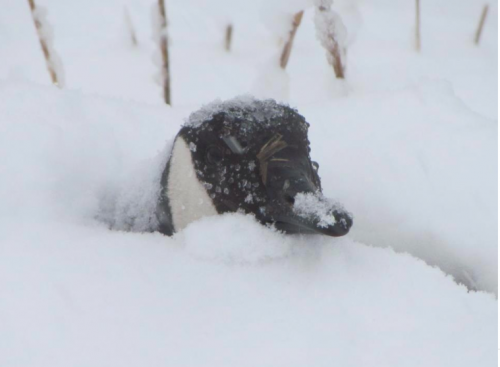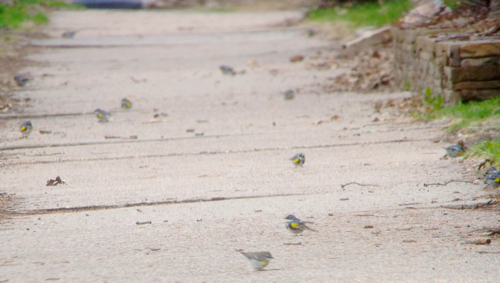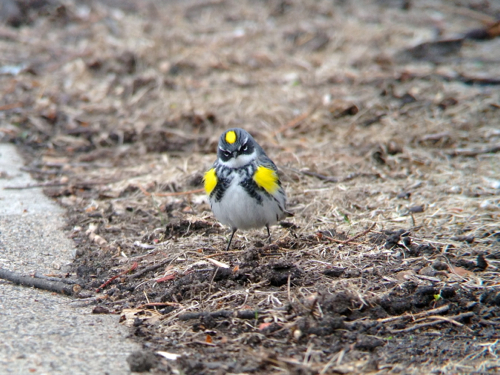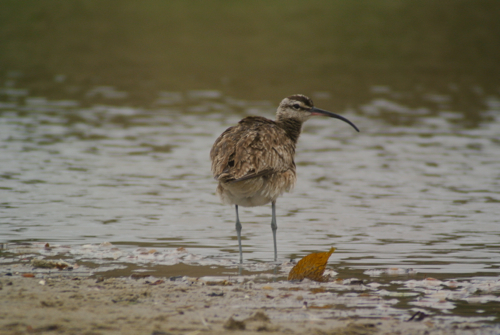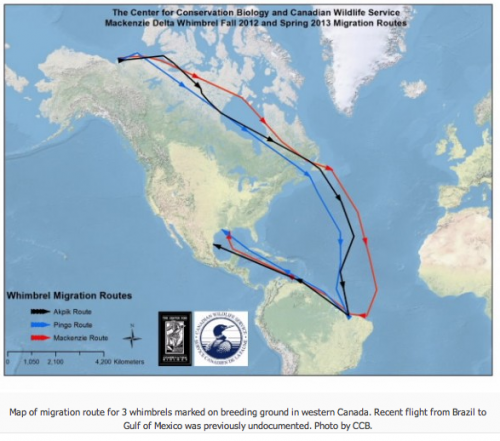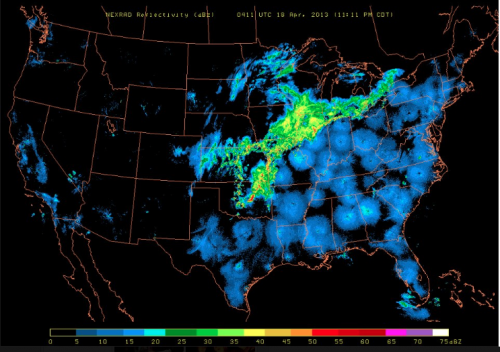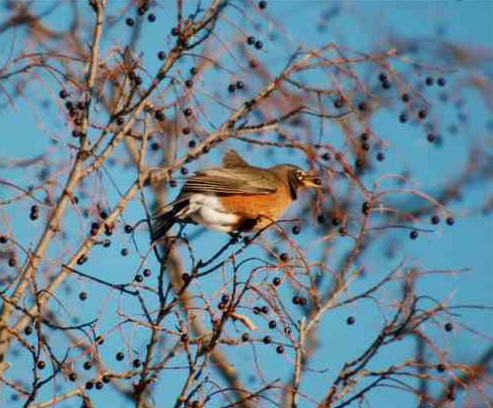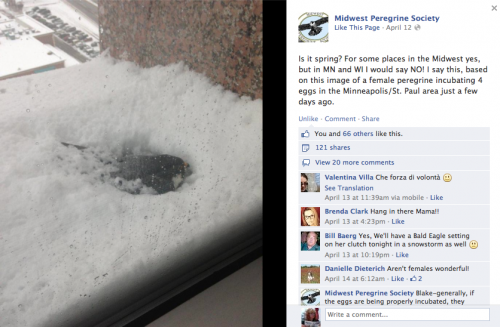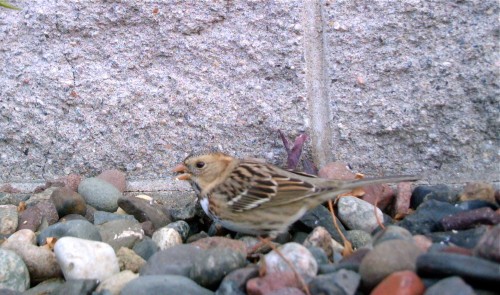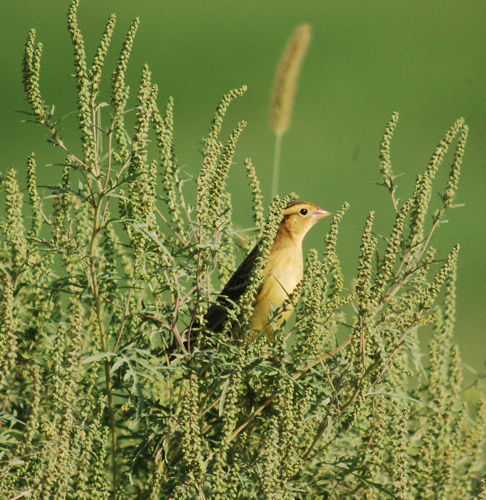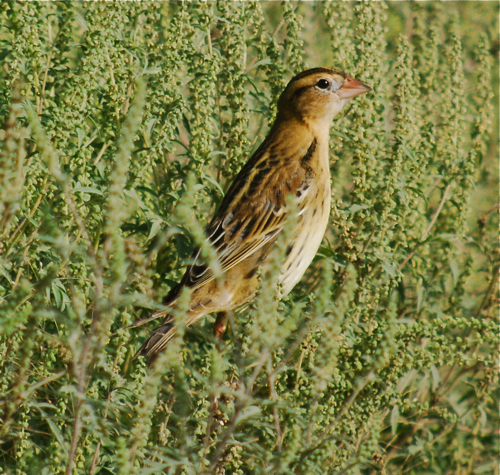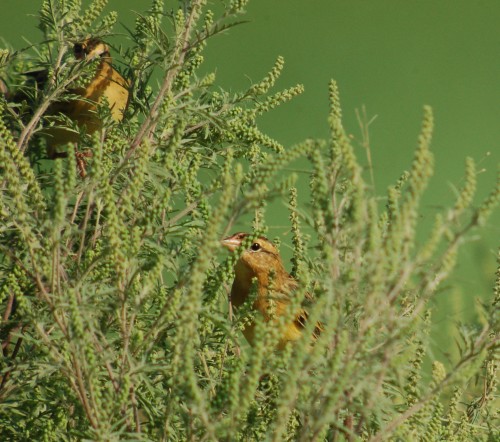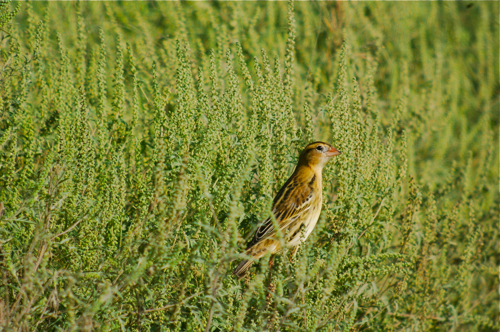Last night on Twitter, someone sent me a link to Hummingbird.net announcing, "Hummingbirds are here!" And low and behold it looked like ruby-throated hummingbird migration was a month early. I don't expect hummingbirds in Minnesota until the first week in May, MAYBE the last week in April. But then I remembered, I just recorded an interview about migration with Outdoor News and right before it I checked my BirdsEye App to see what eBird reporters had seen hummingbird wise...there's a huge discrepancy. Check this out:

On the left is a screen shot from my BirdsEys app that gives me up to the date info from what people are reporting in to eBird (it's vetted information, if something doesn't gel with their expected birds, you get a request for clarification or documentation). On the right is the Hummingbirds.net map. This is something where anyone can enter a siting and it's not really vetted.
So what's going on here? Are eBird users just not interested in backyard birds and only pursuing hardcore rarities? Are there just too few eBird users and they are missing those early ruby-throated hummingbirds? Do people reporting to hummingbird.net seeing a few early birds? Are they confusing hummingbirds with hummingbird moths or other smaller birds (don't scoff, you'd be amazed what people mistake hummingbirds for, even someone you would consider well educated)?
There are some migrating birds that can arrive early and though it's a gamble, they can navigate a few cold snaps. For example--tree swallows, unlike other swallows will eat berries if insects aren't available. They are one of the first swallows to return. Osprey and loons need open water for fishing. If the ice out is month early on the lakes, it's possible to see them that early. However, bird migration triggers vary from species to species. For some it's hard-wired timing or daylight length and temperature has little to do with it.
I posted the above image this image to my Facebook page to see what others thought. I personally am more inclined to trust the eBird reports since they are vetted and in the past when I've linked to the Hummingbird.net sightings page, it was often a good two weeks before I saw hummingbird activity myself and have been a bit suspect of it. A rule of thumb for Minnesota has been that once you see yellow-bellied sapsuckers, you can see ruby-throated hummingbirds because the wells that sapsuckers drill on trees not only produce sap but trap minute insects, a valuable back up food source for early hummingbirds that can find little nectar from flowers in a cold spring. Corey Finger over at 10,000 Birds said that doesn't work for New York because they have sapsuckers all winter and he directed me to an interesting blog post by Jim McCormack on this same subject--note all his photos of hummingbird moths.

This morning I found an email from Marshall Illiff, the project leader for eBird who tried to answer some of these questions over at the Massachusetts bird list serve (lots of birders are noticing this). You can read his full email here, but I'll highlight a few of Marshall's insights below:
"eBird is now a source of up to 3 million records (from over 200,000 checklists) each month. Although I really wish that more people in more places were reporting their birds to it (contact me if you want to get started!), I believe it now has enough information to provide an incredibly accurate and detailed look at the advancing front of bird movement in the USA.
Check out these maps, for example, of the next species that will hit Massachusetts.
Blue-gray Gnatcatcher: -- already early to our south, they may arrive next week (and will be ridiculously early if they do)
Louisiana Waterthrush:-- Likewise, ridiculously early for Maryland and New Jersey. They should reach us within the next 1-10 days, so check territories near you.
These maps above match the chatter on the listservs about what people are seeing; eBird and the listservs provide quasi-independent verification of what birders are seeing.
Yes, this spring is remarkable, and *population-level* arrival in New England of things like American Woodcock, Killdeer, Eastern Phoebe, Tree Swallow, and Pine Warbler are all far ahead of schedule (averaging 10-14 days or more in most of the cases I have looked at). However remarkable though this is, these are all birds that would be expected in Massachusetts within two weeks of their actual arrival. There is a temptation to say -- hey, it's an early spring, "anything is possible." But that simply is not true. I am willing to stick my neck out and say that, in this decade anyway, a March Eastern Wood-Pewee, Blackpoll Warbler, Yellow-billed Cuckoo, or Alder Flycatcher is simply NOT possible. These are species that do not even arrive on the Gulf Coast until mid to late April, and their arrival in Massachusetts follows 2-3 weeks behind that (only three of the four have occurred in April, ever, and those only barely). There is concern among scientists that these birds may *never* "learn" to arrive earlier, which could have drastic consequences for those species. My point is that anything is NOT possible, and that despite the remarkable weather, bird migration is also governed to some degree by an internal clock and by the simple challenge of geography. All four of these birds I mentioned winter in South America, and it takes a long time and a lot of preparation (i.e., fattening up) for these birds to make the jump.
Granted, Ruby-throated Hummingbirds, which winter in Mexico and Central America, and increasingly in the Southeastern US from North Carolina to Florida and west to central east Texas, are a different case. Their normal arrival dates are earlier (about 25 April-5 May in New England). But regardless that is about one month from now! Could hummingbirds be one month early? Could any bird?
eBird has a rigorous data quality system, with over 370 volunteer reviewers managing several thousand regional checklists that define bird occurrence in each of the twelve months of the year. Any submitted record that falls outside of expectations is flagged for review. I double-checked to make sure there were no Ruby-throateds lost in the eBird review purgatory. There were two, form Indiana and Wisconsin, and one of those lists has many other suspect species on it (Wood Thrush!). In other words, it isn't like the eBird review process is keeping hundreds of hummingbirds hidden.
The New England result of that data quality process? eBird has this graph of Ruby-throated Hummingbird migration, averaged across all years for these states: New Hampshire, Massachusetts, Rhode Island, Connecticut, and New York: http://tinyurl.com/75gt2js. The actual numbers? In early April, 1/12355 has reported Ruby-throated; in the second week of April, 0/12826; in the third week, 15/12778; and in the third week, 308/17522 (giving a whopping 1.27% chance of seeing a hummingbird in any of those states in the last week of April…although this chance increases later in April and is probably higher in lowland areas vs. mountainous ones).
Furthermore, the New England-New York arrival takes a full month to occur, with obvious arrivals continuing through the week of 15-22 May and beyond. So we are at least two months from the end of hummingbird migration into New England.
Delving into the literature for this region, here is what I find.
- Cape May, New Jersey (Sibley 1997): extreme early date = 29 March, with bulk arrival not until late April (based on his histogram)
- New York (Levine 1998): "extreme early date = 14 April (coastal and inland)"
- Massachusetts (Veit and Petersen 1993): extreme dates of 18 Mar 1973 in Sudbury (fide Baird) and 26 Mar 1969 in Chatham (Fuller, fide Baird). [Bird Observer database may have additional info]
- New Hampshire (fide Pam Hunt and New Hampshire Bird Records): record early date 8 April, and 14 total April records, with just 5-6 before 26 April
I can't help but wonder if the early dates for Cape May, Massachusetts, and eBird (1st week of April) were carefully vetted. All are far enough outside of the main arrival period as to raise questions. They may be correct. But maybe not. No system is infallible, and all of these raise my eyebrows a bit given how far outside of the norm they are.
Prior to posting this, I checked with bird records managers in Maine, New Hampshire, Massachusetts, Connecticut, New York, New Jersey, Maryland, and North Carolina. Without exception, they responded with skepticism about the posted arrival dates and had never heard of verified (i.e., documented with photo) or even credible reports of hummingbirds as early as mid-March in their regions. Never, and that's including this year. Early spring or not, all were skeptical that the data could be believed."

So should you put out a hummingbird feeder in the northern US? It can't hurt, but I wouldn't trust the Hummingbirds.net map that you will have tons of hummingbirds right away. If you do have hummingbirds...and even a photo, let me know...or better yet, join eBird and submit your sightings.

